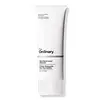What's inside
What's inside
 Key Ingredients
Key Ingredients

No key ingredients
 Benefits
Benefits

 Concerns
Concerns

 Ingredients Side-by-side
Ingredients Side-by-side

Water
Skin ConditioningBehenyl Alcohol
EmollientPolyglyceryl-2 Stearate
EmulsifyingGlycolipids
Skin ConditioningPentylene Glycol
Skin ConditioningPolyglyceryl-6 Dicaprate
EmulsifyingGlyceryl Stearate
EmollientStearyl Alcohol
EmollientDiutan Gum
Polyacrylate Crosspolymer-6
Emulsion StabilisingSodium Phytate
Phytic Acid
Trisodium Ethylenediamine Disuccinate
Sodium Benzoate
MaskingPhenoxyethanol
PreservativeChlorphenesin
AntimicrobialWater
Skin ConditioningStearic Acid
CleansingSapindus Mukorossi Fruit Extract
Skin ConditioningGlycerin
HumectantCaprylic/Capric Triglyceride
MaskingArginine
MaskingPolysorbate 60
EmulsifyingAcacia Concinna Fruit Extract
Skin ConditioningBalanites Aegyptiaca Fruit Extract
Gypsophila Paniculata Root Extract
Skin ConditioningPolyacrylate Crosspolymer-6
Emulsion StabilisingAcacia Senegal Gum
MaskingXanthan Gum
EmulsifyingPentylene Glycol
Skin ConditioningMelanin
Skin ProtectingSorbic Acid
PreservativeTrisodium Ethylenediamine Disuccinate
Potassium Sorbate
PreservativeSodium Benzoate
MaskingCaprylyl Glycol
Emollient1,2-Hexanediol
Skin ConditioningEthylhexylglycerin
Skin ConditioningPhenoxyethanol
PreservativeChlorphenesin
AntimicrobialWater, Stearic Acid, Sapindus Mukorossi Fruit Extract, Glycerin, Caprylic/Capric Triglyceride, Arginine, Polysorbate 60, Acacia Concinna Fruit Extract, Balanites Aegyptiaca Fruit Extract, Gypsophila Paniculata Root Extract, Polyacrylate Crosspolymer-6, Acacia Senegal Gum, Xanthan Gum, Pentylene Glycol, Melanin, Sorbic Acid, Trisodium Ethylenediamine Disuccinate, Potassium Sorbate, Sodium Benzoate, Caprylyl Glycol, 1,2-Hexanediol, Ethylhexylglycerin, Phenoxyethanol, Chlorphenesin
 Reviews
Reviews

Ingredients Explained
These ingredients are found in both products.
Ingredients higher up in an ingredient list are typically present in a larger amount.
Chlorphenesin is a synthetic preservative. It helps protect a product against bacteria in order to extend shelf life. In most cases, Chlorphenesin is paired with other preservatives such as phenoxyethanol and caprylyl glycol.
Chlorphenesin is a biocide. This means it is able to help fight the microorganisms on our skin. It is also able to fight odor-releasing bacteria.
Chlorphenesin is soluble in both water and glycerin.
Studies show Chlorphenesin is easily absorbed by our skin. You should speak with a skincare professional if you have concerns about using Chlorphenesin.
Learn more about ChlorphenesinPentylene glycol is typically used within a product to thicken it. It also adds a smooth, soft, and moisturizing feel to the product. It is naturally found in plants such as sugar beets.
The hydrophilic trait of Pentylene Glycol makes it a humectant. As a humectant, Pentylene Glycol helps draw moisture from the air to your skin. This can help keep your skin hydrated.
This property also makes Pentylene Glycol a great texture enhancer. It can also help thicken or stabilize a product.
Pentylene Glycol also acts as a mild preservative and helps to keep a product microbe-free.
Some people may experience mild eye and skin irritation from Pentylene Glycol. We always recommend speaking with a professional about using this ingredient in your routine.
Pentylene Glycol has a low molecular weight and is part of the 1,2-glycol family.
Learn more about Pentylene GlycolPhenoxyethanol is a preservative that has germicide, antimicrobial, and aromatic properties. Studies show that phenoxyethanol can prevent microbial growth. By itself, it has a scent that is similar to that of a rose.
It's often used in formulations along with Caprylyl Glycol to preserve the shelf life of products.
Polyacrylate Crosspolymer-6 is a texture enhancer and pH adjuster.
It is be used to thicken water-based products and create a gel-texture with a velvet feel.
One manufacturer claims this ingredient to have a pH range of 2-8 and to be biodegradable.
Learn more about Polyacrylate Crosspolymer-6Sodium Benzoate is a preservative. It's used in both cosmetic and food products to inhibit the growth of mold and bacteria. It is typically produced synthetically.
Both the US FDA and EU Health Committee have approved the use of sodium benzoate. In the US, levels of 0.1% (of the total product) are allowed.
Sodium benzoate works as a preservative by inhibiting the growth of bacteria inside of cells. It prevents the cell from fermenting a type of sugar using an enzyme called phosphofructokinase.
It is the salt of benzoic acid. Foods containing sodium benzoate include soda, salad dressings, condiments, fruit juices, wines, and snack foods.
Studies for using ascorbic acid and sodium benzoate in cosmetics are lacking, especially in skincare routines with multiple steps.
We always recommend speaking with a professional, such as a dermatologist, if you have any concerns.
Learn more about Sodium BenzoateTrisodium Ethylenediamine Disuccinate is used to help stabilize a product.
It is a chelating agent, meaning it helps prevent metal ions from binding to other ingredients. This prevents unwanted reactions in products. Metal ions can come into a product via the water ingredient. They are found in trace amounts and are not known to be harmful.
Water. It's the most common cosmetic ingredient of all. You'll usually see it at the top of ingredient lists, meaning that it makes up the largest part of the product.
So why is it so popular? Water most often acts as a solvent - this means that it helps dissolve other ingredients into the formulation.
You'll also recognize water as that liquid we all need to stay alive. If you see this, drink a glass of water. Stay hydrated!
Learn more about Water